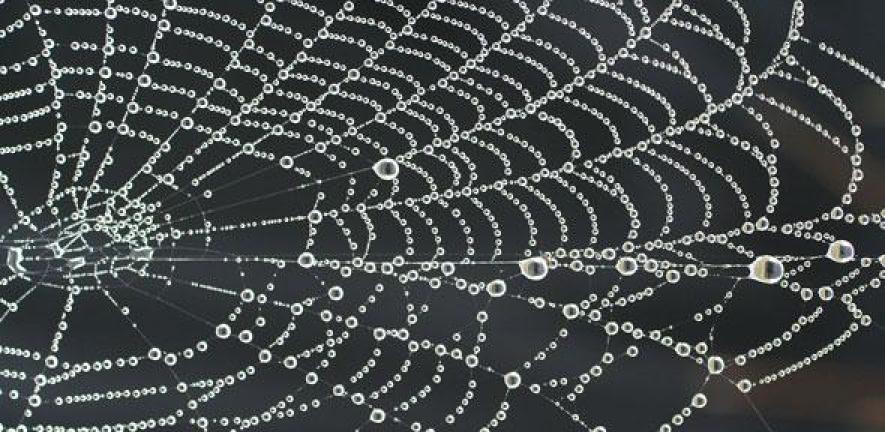
The super-stretchy and strong fibre are almost entirely composed of water, and could be used to make textiles, sensors and other materials. The fibres, which resemble miniature bungee cords as they can absorb large amounts of energy, are sustainable, non-toxic and can be made at room temperature.
This new method not only improves upon earlier methods of making synthetic spider silk, since it does not require high energy procedures or extensive use of harmful solvents, but it could substantially improve methods of making synthetic fibres of all kinds, since other types of synthetic fibres also rely on high-energy, toxic methods.
The results are reported in the journal Proceedings of the National Academy of Sciences.
The fibres designed by the Cambridge team are “spun” from a soupy material called a hydrogel, which is 98% water. The remaining 2% of the hydrogel is made of silica and cellulose, both naturally available materials, held together in a network by barrel-shaped molecular “handcuffs” known as cucurbiturils. The chemical interactions between the different components enable long fibres to be pulled from the gel.
“When you look at these fibres, you can see a range of different forces holding them together at different scales,” said PhD Chemistry student Yuchao Wu, the paper’s lead author. “It’s like a hierarchy that results in a complex combination of properties.”
Although not as strong as the strongest spider silks, the strength of the fibres exceeds that of other synthetic fibres, such as cellulose-based viscose and artificial silks, as well as natural fibres such as human or animal hair.
This research is the result of a collaboration between the Melville Laboratory for Polymer Synthesis in the Department of Chemistry, led by Professor Oren Scherman; and the Centre for Natural Material Innovation in the Department of Architecture, led by Dr Michael Ramage. The two groups have a mutual interest in natural and nature-inspired materials, processes and their applications across different scales and disciplines.
The research is supported by the UK Engineering and Physical Sciences Research Council (EPSRC) and the Leverhulme Trust.
Reference
Yuchao Wu et al. ‘Bioinspired supramolecular fibers drawn from a multiphase self-assembled hydrogel.’ Proceedings of the National Academy of Sciences (2017). DOI: 10.1073/pnas.1705380114

